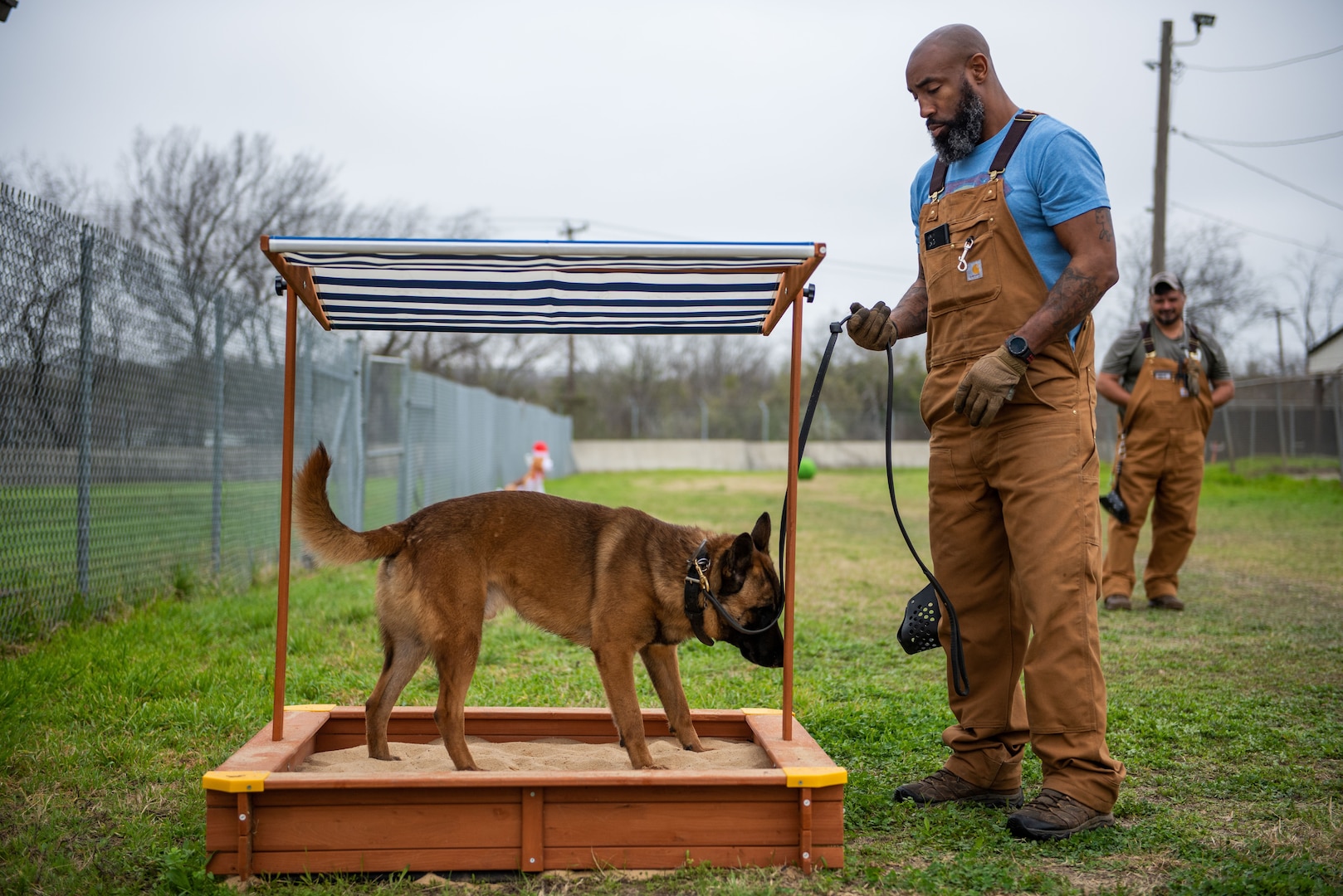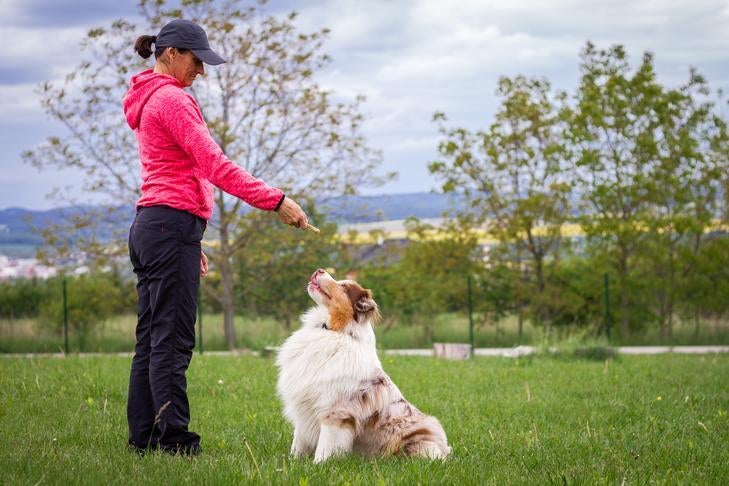Transform Your Dog's Behavior with These Proven Dog Training Methods
Transform Your Dog's Behavior with These Proven Dog Training Methods
Blog Article
Transform Your Pet dog's Actions With Proven Training Techniques
Changing your pet's actions calls for a nuanced understanding of their specific traits and demands, along with the application of tried and tested training approaches. By using favorable support and identifying important signs in their body language, you can properly deal with typical behavior concerns such as extreme jumping or barking. Consistency in your training approach not just boosts obedience but additionally fosters a deeper bond of trust and regard between you and your pet. Nonetheless, the path to effective change might offer unpredicted difficulties that warrant additional expedition.
Understanding Pet Behavior
Recognizing canine actions is necessary for efficient training and interaction between human beings and their canine buddies. Dogs, as social animals, show a variety of actions affected by genetics, setting, and experiences - Dog training. Acknowledging these actions helps proprietors tailor their training approaches to meet the details needs of their pet dogs
Secret facets of pet behavior consist of body language, vocalizations, and social communications. Additionally, socialization plays an essential function in shaping actions; pets that interact positively with other animals and various people are generally more adaptable and well-adjusted.
Furthermore, acknowledging anxiety signals-- such as pacing, evasion, or panting habits-- can avoid escalation into much more serious issues. Owners that are in harmony with their pet dog's behavior can create a secure and caring setting, promoting depend on and boosting the training procedure. Inevitably, a deep understanding of canine behavior lays the foundation for a harmonious relationship and reliable training end results, making certain both pets and their proprietors flourish with each other.
Positive Support Methods
Positive support methods are widely identified as one of one of the most reliable approaches for training pet dogs, fostering a favorable discovering atmosphere. This method involves satisfying desired actions with treats, appreciation, or play, consequently motivating the dog to duplicate those behaviors. Unlike punishing approaches, positive support develops count on and reinforces the bond between the fitness instructor and the dog.
To execute favorable reinforcement successfully, timing is crucial. Benefits need to be given instantly adhering to the desired habits to aid the dog make the connection. Uniformity is likewise crucial; using the exact same commands and incentives helps the canine recognize what is expected. In addition, differing the rewards can keep the pet dog involved - Dog training. As an example, rotating in between treats, playthings, and spoken appreciation can keep passion and motivation.
It is very important to note that positive reinforcement is not about bribery; rather, it has to do with reinforcing good actions. With time, as the pet finds out to link certain activities with positive end results, the regularity of rewards can be gradually reduced, transitioning to verbal appreciation or recurring benefits. This method not only urges obedience yet likewise promotes a certain and satisfied dog, making training a more pleasurable experience for both parties entailed.
Addressing Usual Problems
Dealing with common concerns during pet training is crucial for making certain a effective and harmonious relationship in between the pet and its owner. Many pet owners experience behavior difficulties, such as extreme barking, leaping, and chain drawing. Comprehending the origin of these actions is important for efficient training.
To mitigate this, offer enough physical exercise, psychological stimulation, and chances for social communication with both humans and other pet dogs. Educating the canine to rest upon welcoming can redirect this behavior favorably.
Chain drawing is one more common concern, frequently resulting from a pet dog's enthusiasm to explore. Utilizing appropriate chain handling methods, incorporated with training protocols that encourage loose-leash walking, can significantly enhance this habits.
Additionally, concerns like source guarding or splitting up anxiousness call for customized strategies. Gradual desensitization and counter-conditioning can be effective in attending to these difficulties. By identifying and proactively managing these common issues, canine owners can foster a more pleasurable training experience and enhance the bond with their canine buddies.
Uniformity in Training

To accomplish consistency, it is important that all members of the family follow the same training techniques. For example, making use of the same spoken hints and hand signals guarantees that the canine gets consistent messages. Additionally, the timing of improvements and benefits should be constant; prompt reinforcement boosts the possibility that the pet dog will certainly associate the habits with the end result.
Routine technique sessions, paired with structured timetables for feeding, strolling, and playtime, assistance pet dogs anticipate and comprehend their atmosphere, making them extra receptive to training. Inevitably, uniformity cultivates a feeling of safety and security and trust fund, empowering pet dogs to learn extra successfully.
Structure a Strong Bond
How can promoting a solid bond between a pet dog and its owner boost the training experience? A strong relationship improved depend on and regard acts as the foundation for efficient training. When a pet dog feels secure in its link with its owner, it is more probable to display favorable behaviors and be receptive to learning. This bond encourages the dog to engage completely in training sessions, as it views the owner as a source of advice and assistance.
In addition, a solid bond helps with far better interaction. Pets are skilled at reviewing human cues, and a relying on connection enables clearer signals throughout training. Proprietors who spend time in structure this bond through play, socializing, and positive reinforcement develop an environment where pets really feel inspired and eager to find out.
Additionally, a reputable connection can lower anxiety and behavioral problems, as canines are much less likely to act out when they really feel understood and cared for. Focusing on the development of a solid bond not just boosts the training experience but also contributes to a better and extra well-adjusted canine. Eventually, the trip of training transforms into a collective collaboration, causing lasting behavior enhancements.
Final Thought

Owners who are attuned to their dog's behavior can develop a nurturing and risk-free environment, promoting trust and enhancing the training process. Inevitably, a deep understanding of canine habits lays the foundation for a harmonious relationship and efficient training results, making sure both canines and their owners thrive with each other.
Dealing with typical problems throughout dog training is important for making sure a successful and unified connection in between the pet and its owner.Consistency is a foundation of reliable pet training, as it establishes a clear structure for the pet to understand actions and expectations.In final thought, transforming a pet's behavior through confirmed training techniques calls for an understanding of canine habits, the application of positive this support techniques, and a focus on uniformity.
Report this page